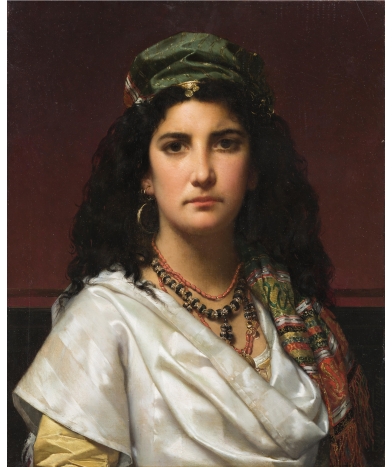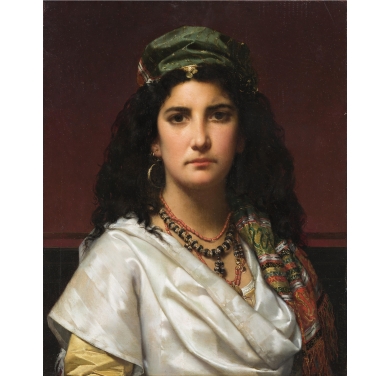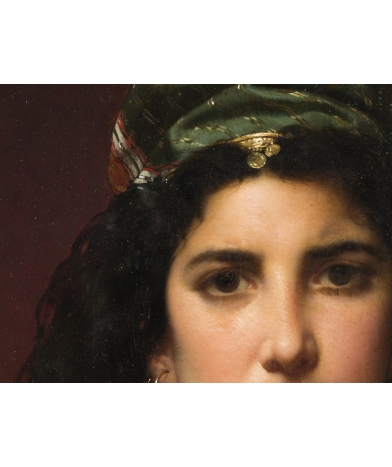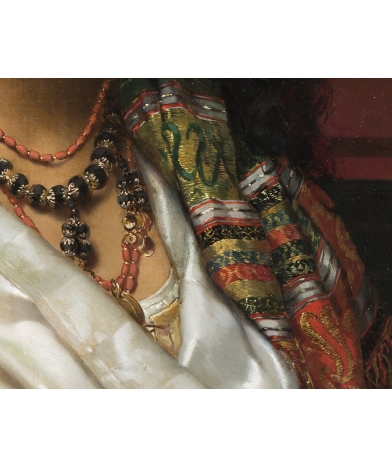Jon Frederik Pieter Portielje (1829-1908)
Oriental beauty
Dimensions : H. 23.2 x W. 18.9 inches
Jon Frederick Pieter (or Jan) Portielje was born in 1829 in Amsterdam. He is a Belgian and Dutch painter specialized in genre scenes and portraits, mainly of women.
He studied at the Koninklijke Akademie van Beeldende Kunsten and was a pupil of Valentijn Bing and Jan Braet von Überfeldt. He stayed in Paris from 1851 to 1853 and painted many portraits of princely figures in France, Belgium and Holland. He had an important clientele both in Brussels and Antwerp, where he eventually settled.
His genre paintings depict elegant women in gardens or luxurious interiors. Some of them were dressed in the orientalist style. He also collaborated with other painters, such as Eugène Rémy Maes and Frans Lebret (1820-1909), who provided the backgrounds and foregrounds for his portraits.
His paintings were highly sucessful in the United States and he worked closely with a number of well-known art dealers, such as Albert D'Huyvetter and his son, originally from Antwerp and based in New York, and the Prinz Brothers of Chicago.
He had a major exhibition at the Antwerp International Exhibition (1894), and participated regularly in the "Exhibition of Living Masters" from 1848 to 1888.
Our painting is a variant of the work of the same artist which is kept at the Museum Boijmans Van Beuningen in Rotterdam. It shows a young woman in oriental dress. The artist represents her expressive and concentrated face with talent. Note the attention to detail in the treatment of the necklaces and the headdress. The silky and supple character of the rich fabrics that adorn the young woman is masterfully rendered.
The painting is in perfect condition.
Museums:
Musée de Cincinatti
Musée de Cologne
Musée Boijmans Van Beuningen, Rotterdam
Bibliography:
E. Bénézit, édition Gründ, Tome 11, page 159-160





